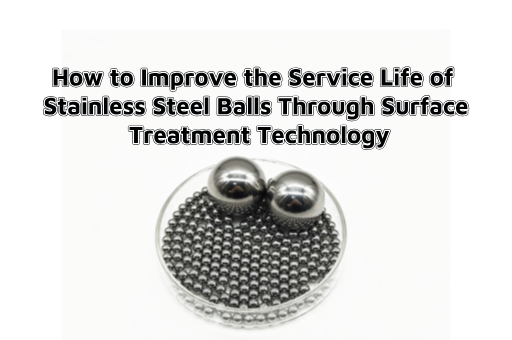
 Home > News
Home > NewsStainless steel balls are fundamental components in various industrial applications, including bearings, valves, and machinery. Their performance and longevity are critical to the efficiency and reliability of the systems they serve. One of the key strategies to enhance the service life of stainless steel balls is through surface treatment technology. This article explores various surface treatment techniques and their impact on improving the durability and functionality of stainless steel balls.

Surface treatment of stainless steel balls is essential for several reasons:
Wear Resistance: Enhanced surface hardness reduces wear and tear.
Corrosion Resistance: Protective coatings prevent oxidation and chemical degradation.
Fatigue Strength: Improved surface quality can reduce the likelihood of fatigue failures.
Friction Reduction: Smoother surfaces decrease friction, leading to better performance and efficiency.
Case Hardening (Carburizing and Nitriding)
Process: Involves diffusing carbon or nitrogen into the surface of the steel balls at high temperatures.
Benefits: Increases surface hardness while maintaining a tough core, thus enhancing wear resistance and fatigue strength.
Induction Hardening
Process: Utilizes electromagnetic induction to heat the surface rapidly, followed by quenching.
Benefits: Provides a hard, wear-resistant surface with minimal distortion.
Physical Vapor Deposition (PVD)
Process: Involves the deposition of thin, hard coatings such as titanium nitride (TiN) or chromium nitride (CrN) onto the stainless steel surface.
Benefits: Enhances wear and corrosion resistance while maintaining a smooth surface.
Chemical Vapor Deposition (CVD)
Process: Chemical reactions deposit thin films of materials like silicon carbide (SiC) onto the steel balls.
Benefits: Provides excellent wear resistance and high-temperature stability.
Electroplating
Process: Uses an electric current to reduce dissolved metal cations so that they form a coherent metal coating on the surface of the steel balls.
Benefits: Improves corrosion resistance and reduces friction.
Polishing
Process: Involves the mechanical removal of surface irregularities to achieve a smooth, reflective finish.
Benefits: Reduces friction and wear, leading to longer service life.
Shot Peening
Process: Bombards the surface with small spherical media to create compressive stress layers.
Benefits: Improves fatigue resistance and reduces the likelihood of crack initiation.
Laser Surface Hardening
Process: Utilizes a high-power laser beam to heat the surface rapidly, followed by self-quenching.
Benefits: Provides precise control over hardening depth and location, leading to minimal distortion and enhanced wear resistance.
Plasma Nitriding
Process: Uses a glow discharge to introduce nitrogen into the steel surface at lower temperatures.
Benefits: Enhances surface hardness and wear resistance without compromising core toughness.
Choosing the right surface treatment depends on the specific application requirements:
Load Conditions: High load applications may benefit from hardening treatments like carburizing or induction hardening.
Environmental Factors: Corrosive environments may require advanced coatings like PVD or CVD.
Performance Requirements: Applications demanding high precision and low friction may benefit from polishing and electroplating.
Surface treatment technology plays a crucial role in extending the service life of stainless steel balls. By selecting and applying the appropriate surface treatment, manufacturers can significantly enhance the wear resistance, corrosion resistance, fatigue strength, and overall performance of these essential components. As surface treatment technologies continue to advance, the potential for even greater improvements in the durability and functionality of stainless steel balls will expand, contributing to more reliable and efficient industrial systems.
View More(Total0)Comment Lists